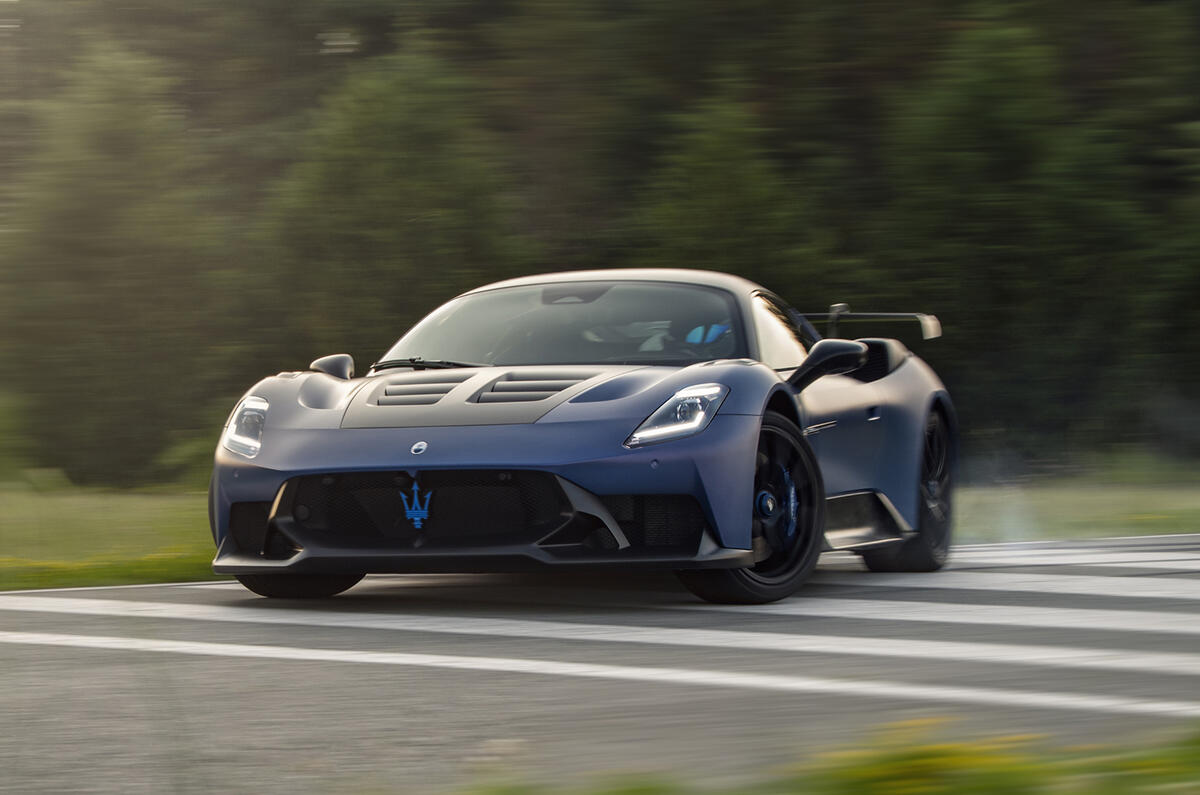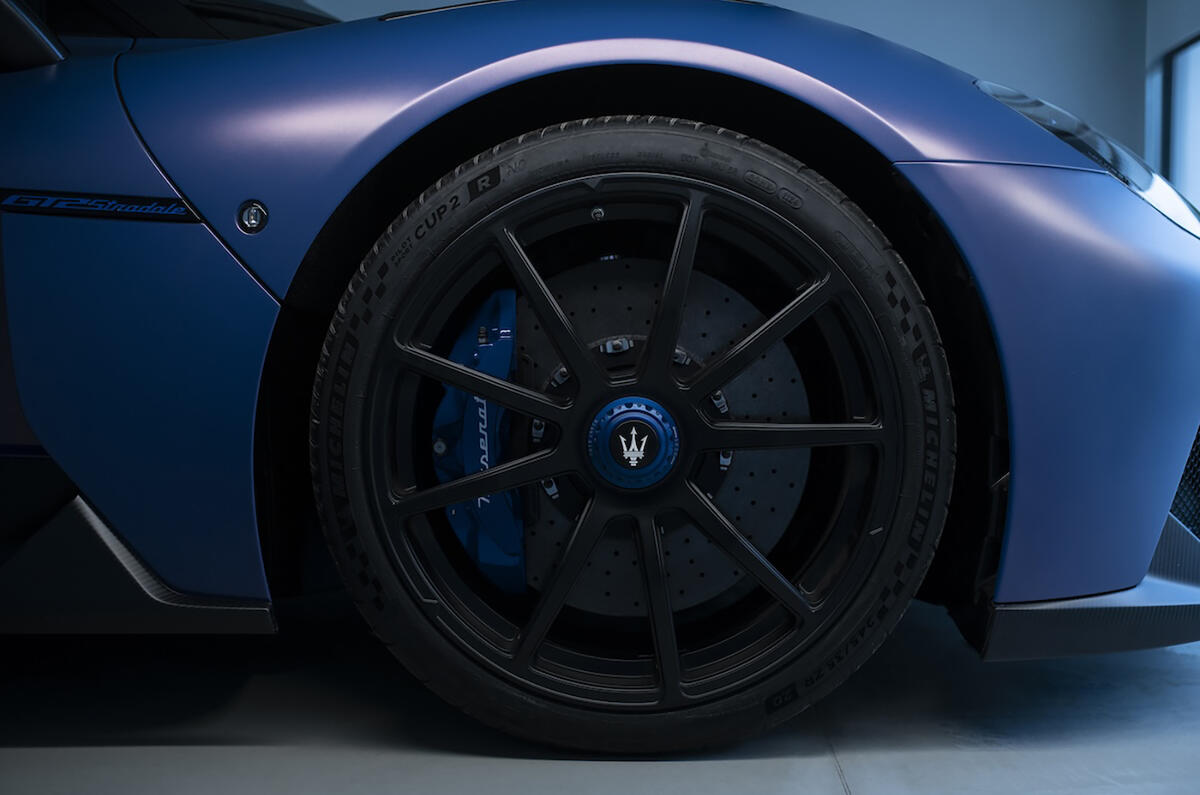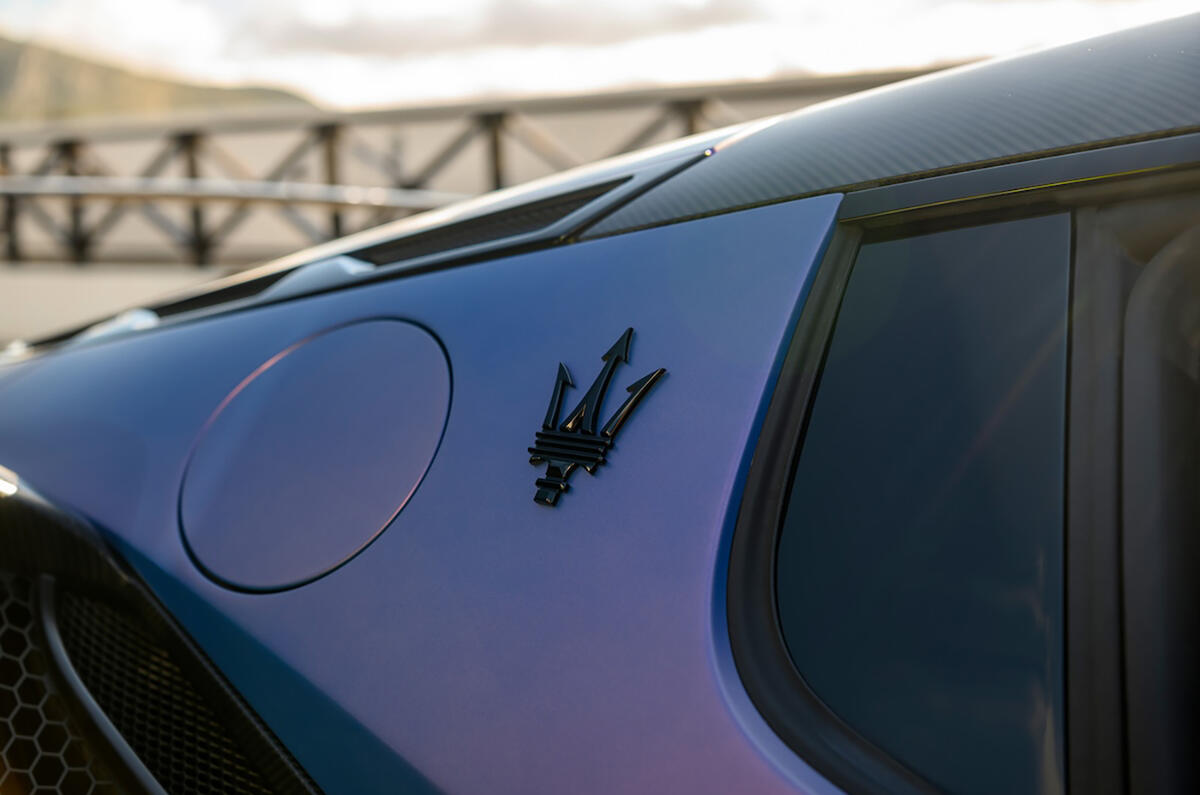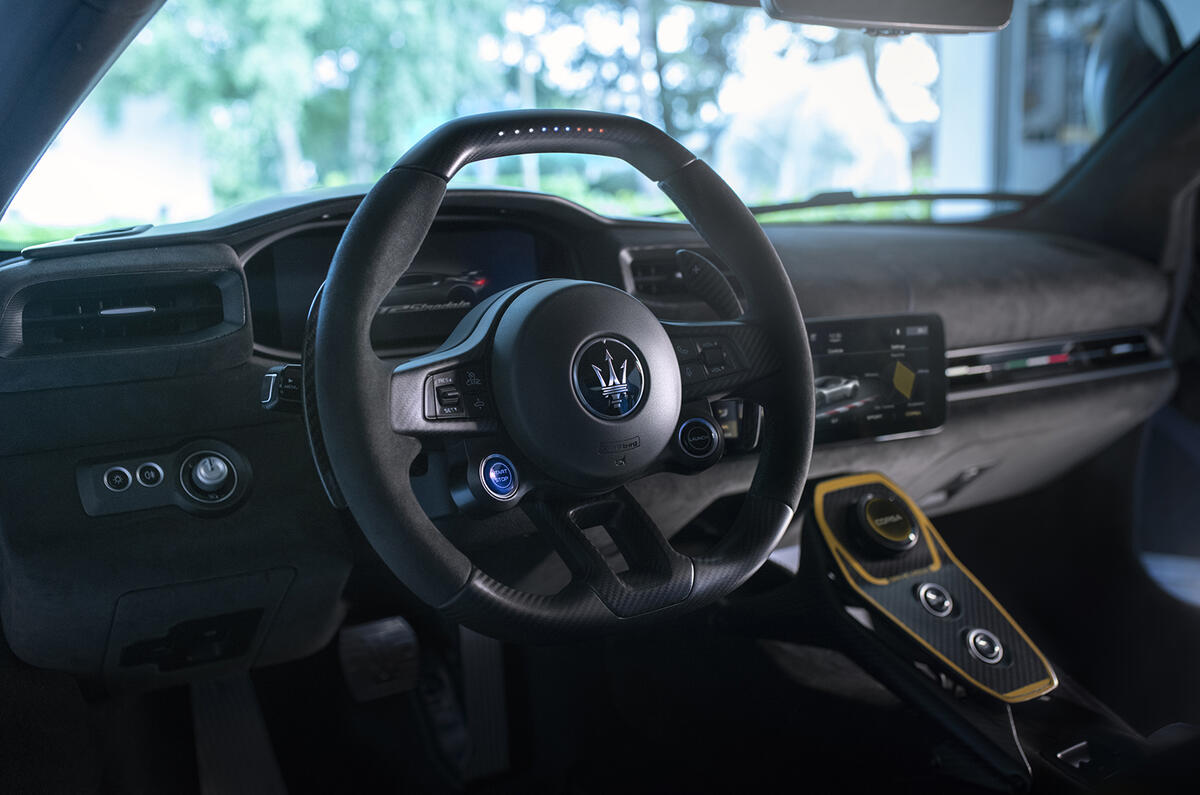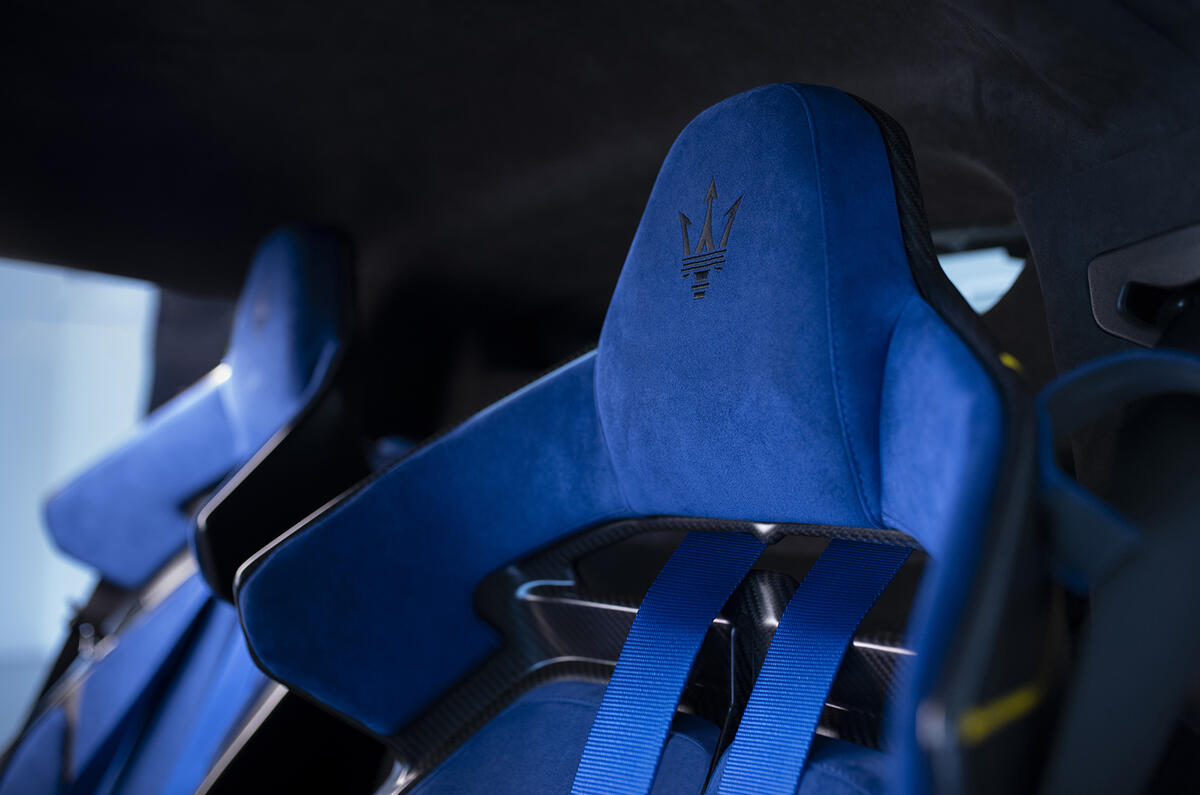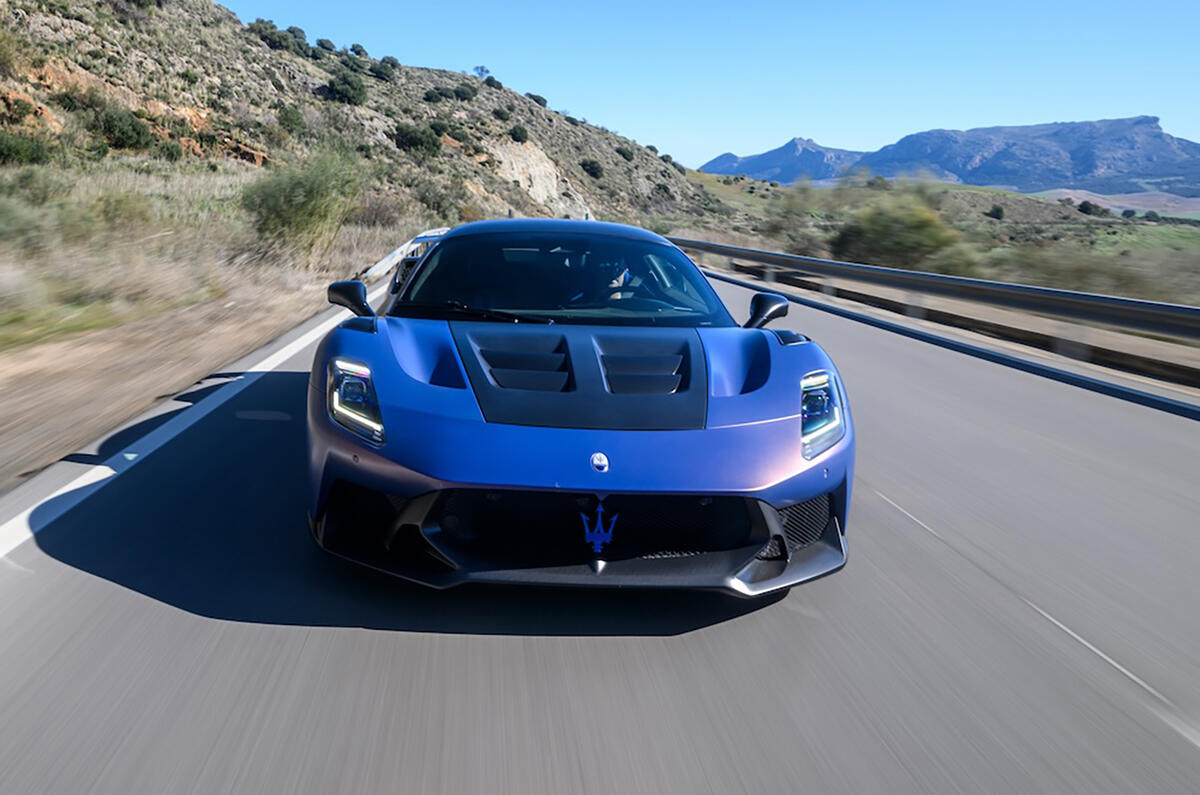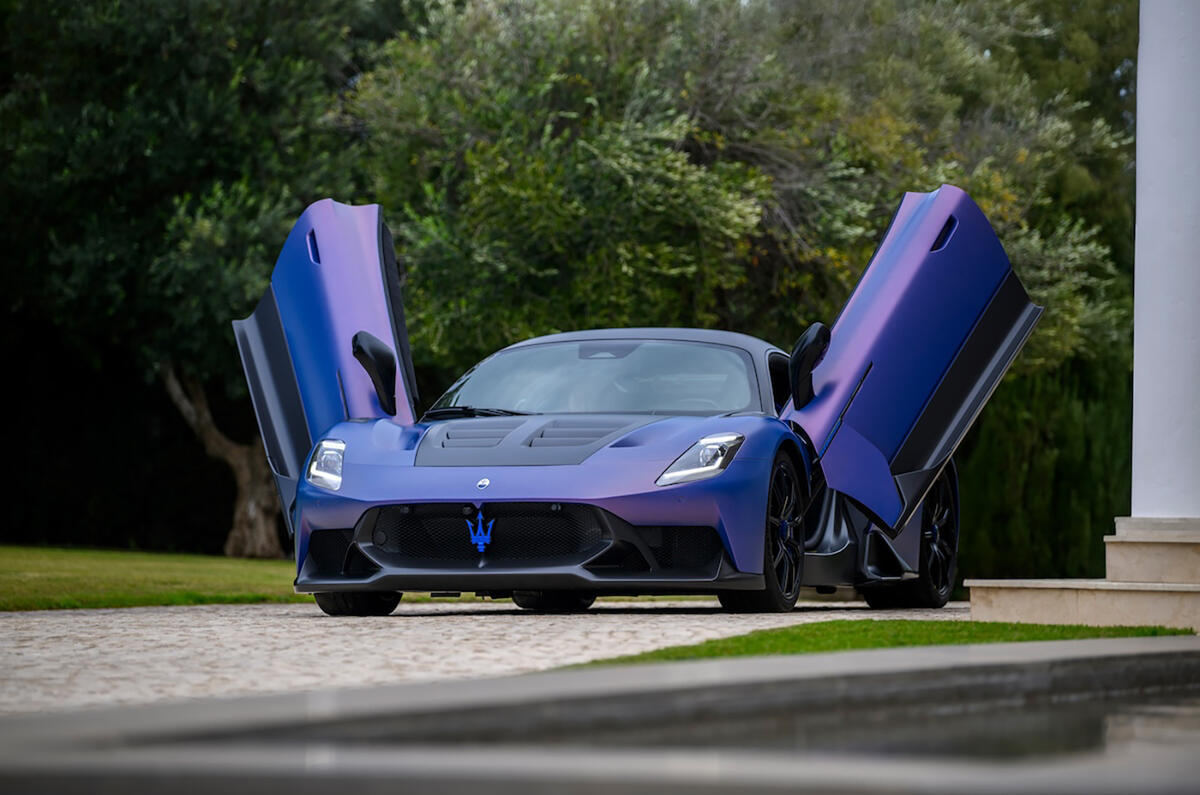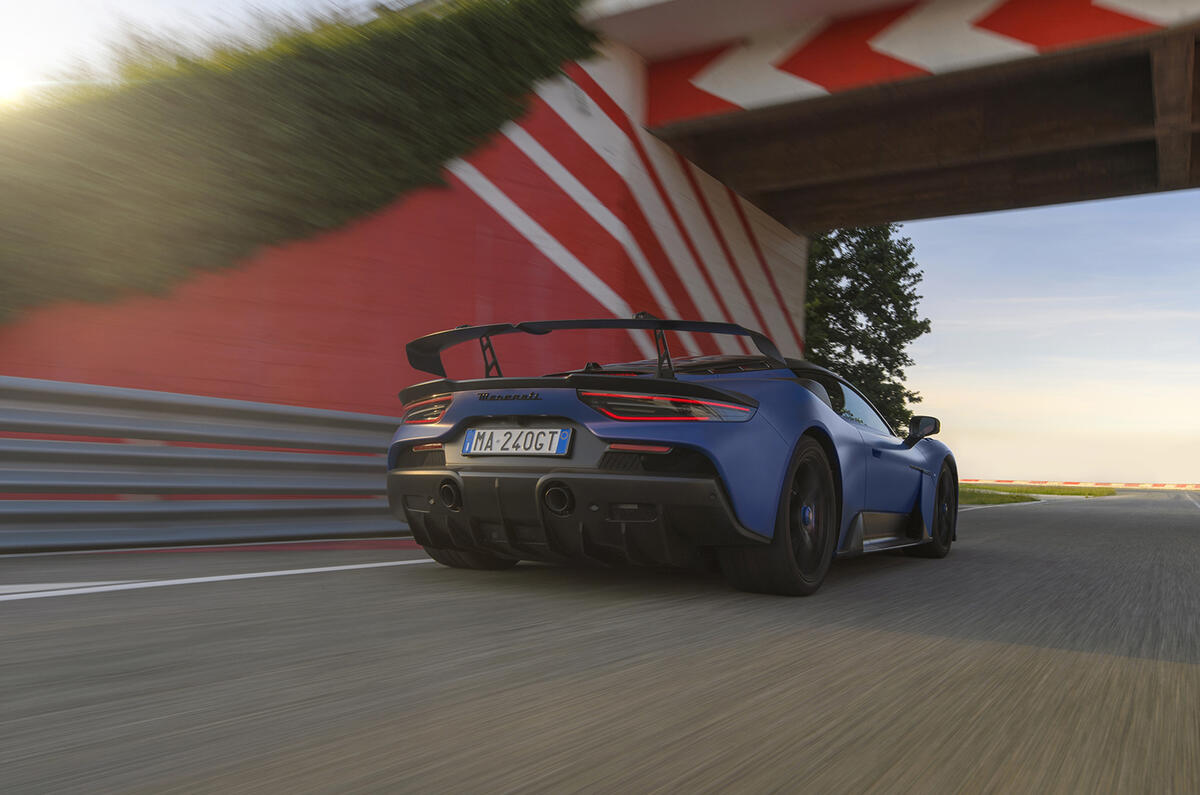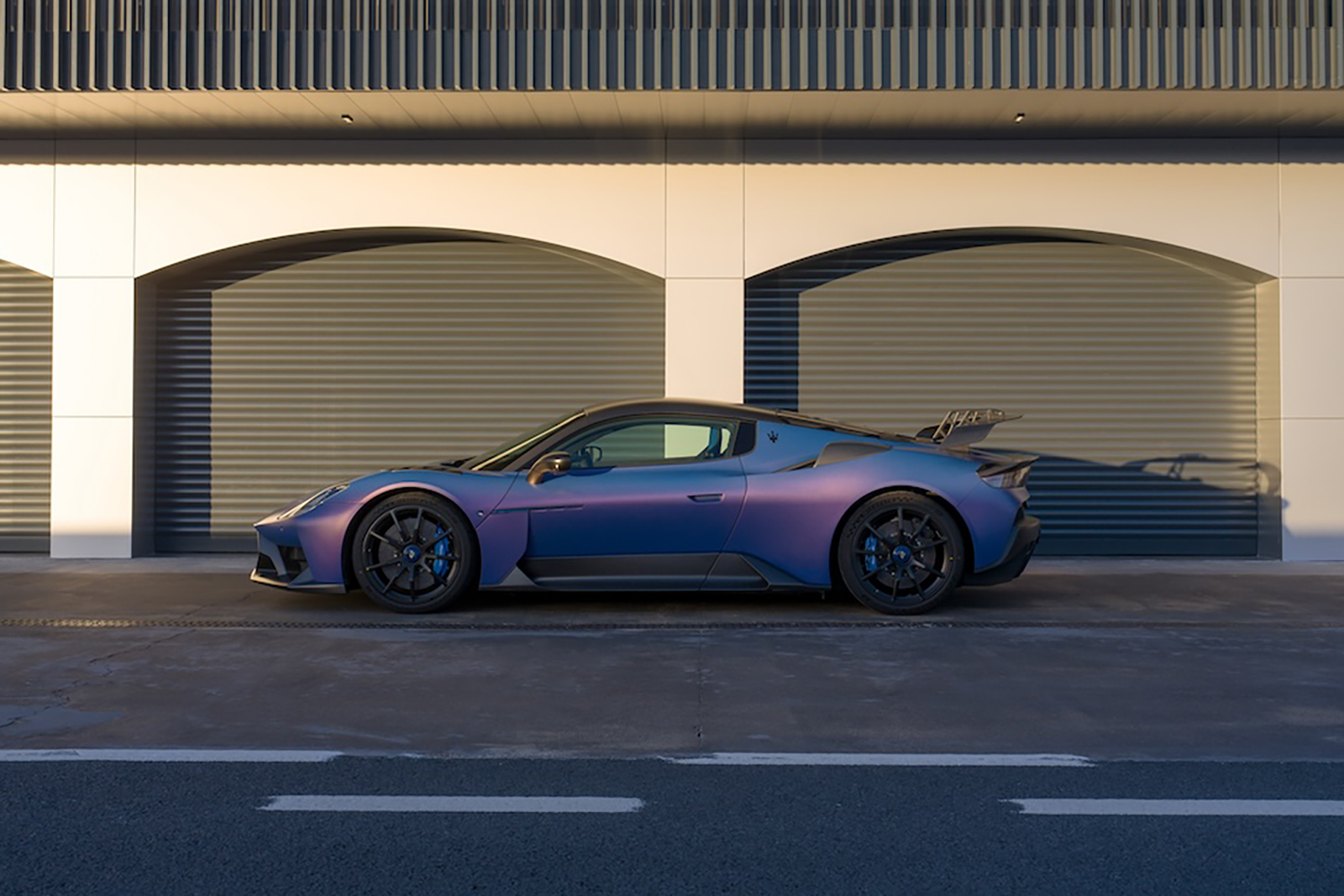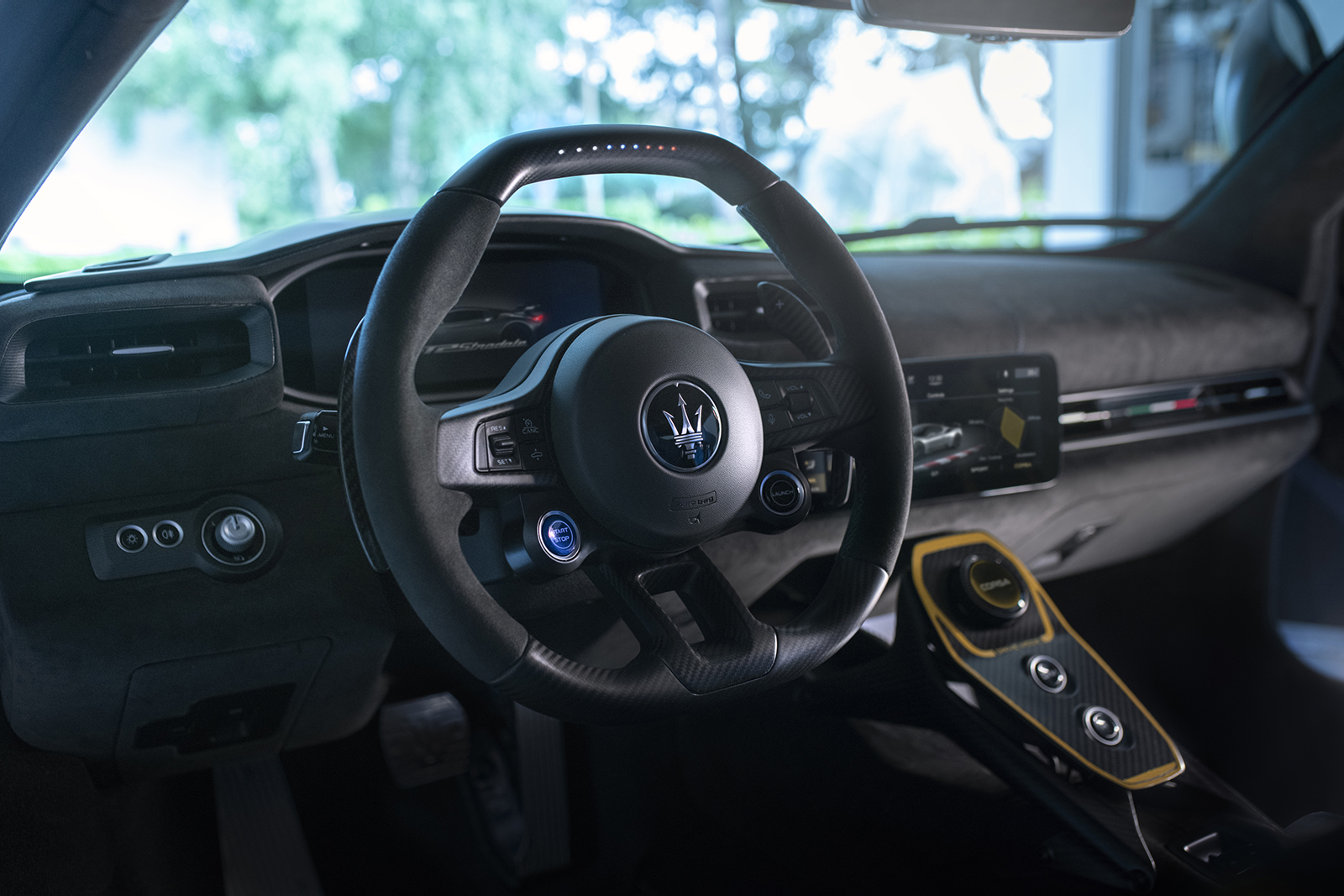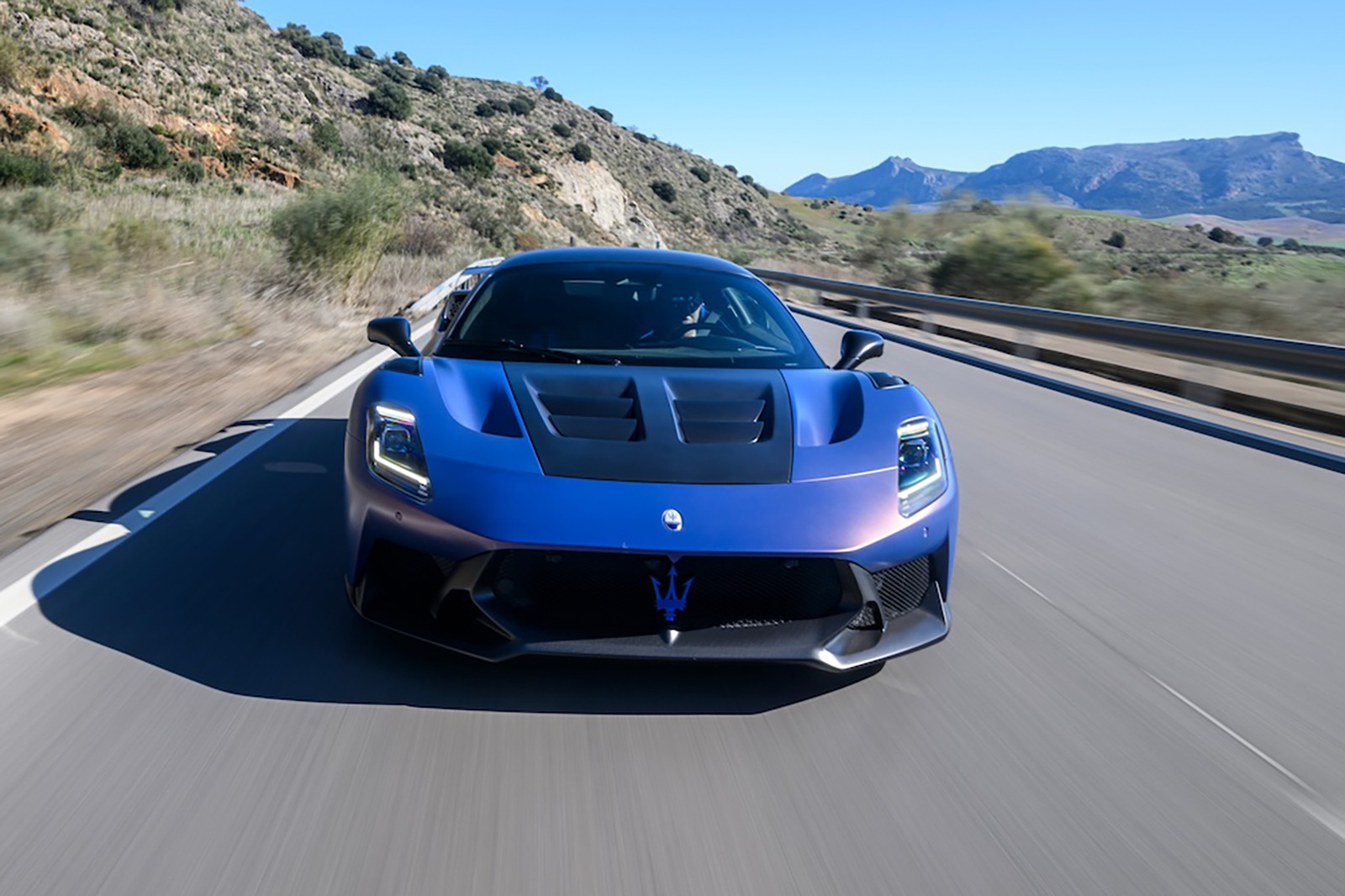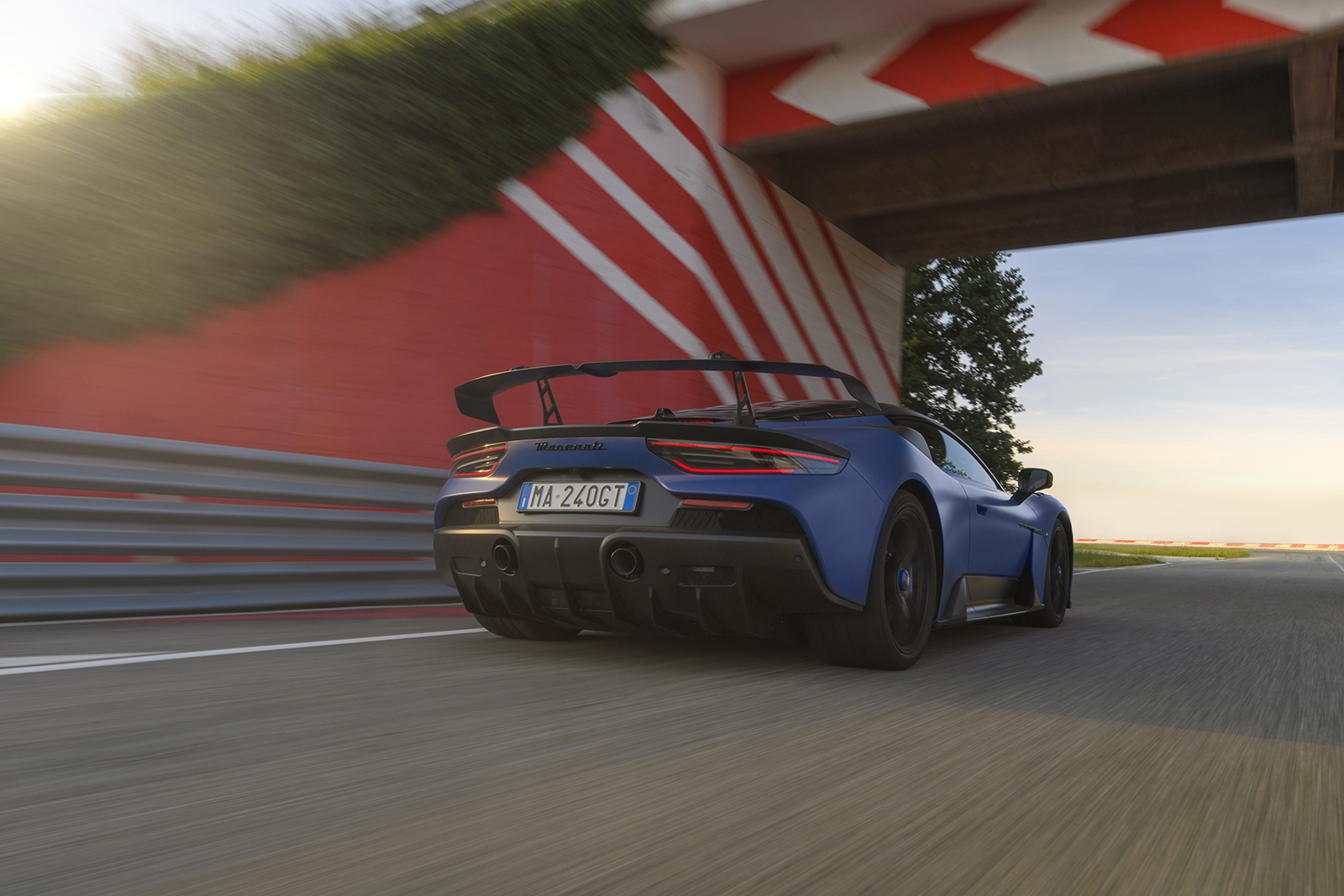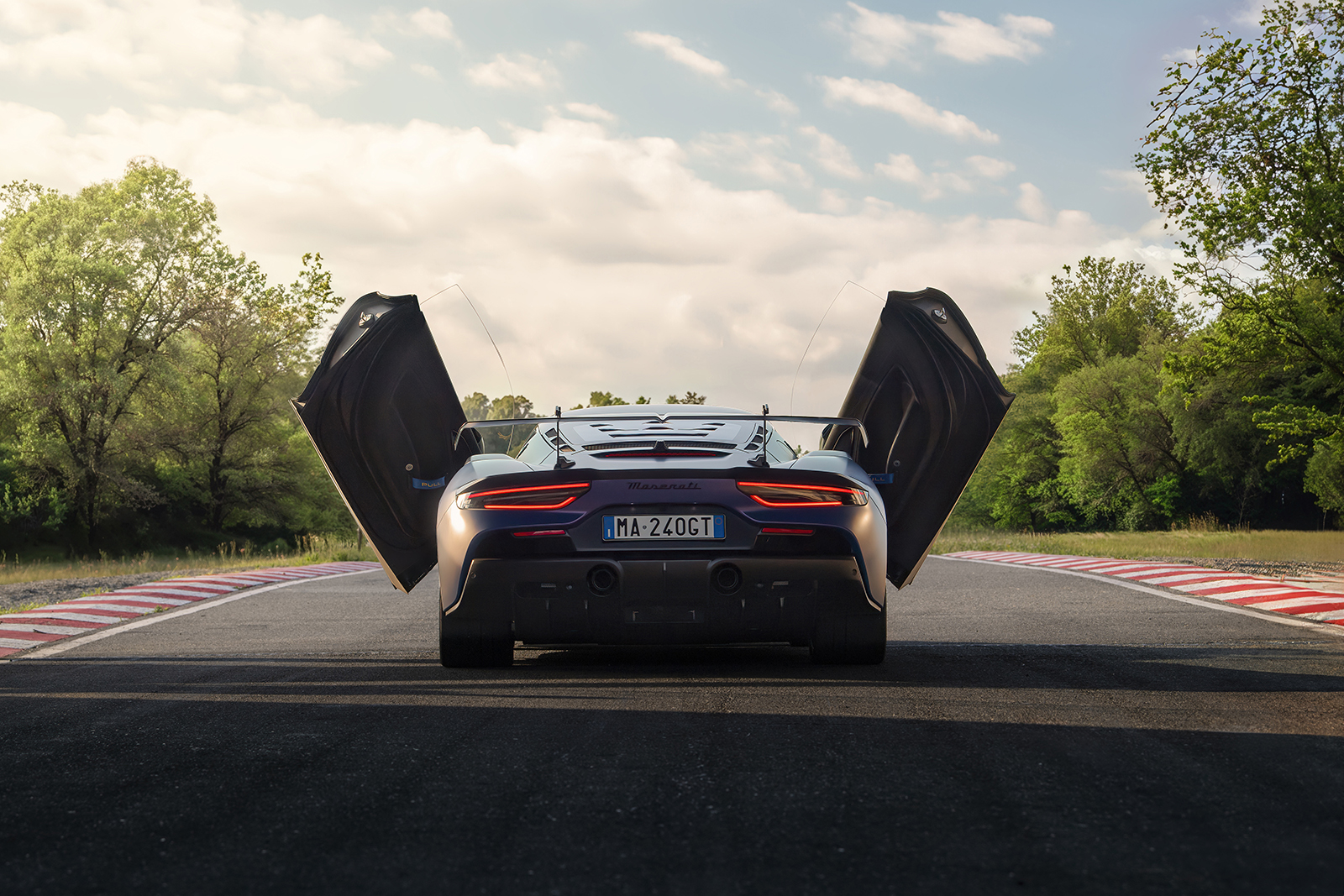The springs are around 10% stiffer, but otherwise the dynamics hardware is fundamentally unchanged, just retuned.
As standard, like the regular MC20, you get a mechanical limited-slip differential but an electronically controlled one, which is all we’ve ever tried, is optional.
You can move through drive modes to firm the dampers, which also punches gearshifts through harder and slackens off the driver aids. The most lax mode turns off the stability and traction control, makes the diff really aggressive and knocks the ABS intervention back to the minimum that Maserati can get away with within road regulations.
We like the regular MC20 here. It’s a relaxed and honest supercar that rides well, and tightening up the springs a little really doesn’t spoil that. Body control is good too, even in the slackest damper modes. By modern standards, with a kerb weight probably in the 1500kgs (Maserati quotes only a dry weight, annoyingly, of 1365kg), this isn’t a heavy car.
Noise levels are higher than standard, and with stones pinging up from the underside yet still pliant suspension, there’s something of the old Ferrari 488 Pista about it, albeit with a more boosty engine and calmer steering. Very satisfying, very easy to get along with.
On track, largely the same is true. The GT2 Stradale feels less raw than the Porsche 911 GT3 or one of the more extreme last Lamborghini Huracáns. It’s more approachable, rides kerbs with genuine absorbance and has small amounts of roll and pitch, even in its firmest suspension setting, but allows the driver to develop a flow with it, rewarding smooth inputs rather than aggressive ones.
In steady-state cornering, it will understeer slightly, as I suppose it should. You can power through it or, less scruffy and more satisfying, trail brake to get the nose more planted on corner entry.
With no electrical assistance weighing it down or an aggressively hooked-up differential, I found it a real pleasure on track.



